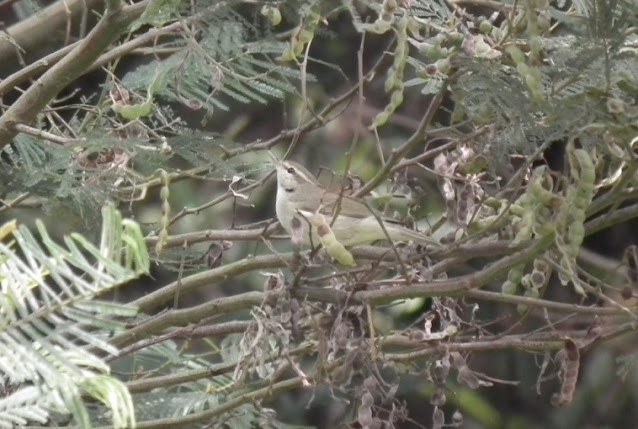As the name suggests, the Openbilled Stork has a narrow gap between the upper and lower parts of the bill. It is a large bird, about 70 cm tall while standing and is found all over India, at riversides, marshes and backwaters of dams. These photographs were snapped at the Ranganathittu Bird Sanctuary, near Mysore.
Conservation
Festivals in India, especially those in which there is community participation, like Ganesh Festival or Dassera, involve high electricity consumption for decorative lighting and loudspeakers constantly playing music at high volume. This, of course, is a great drain on our sparse energy resources. Correspondingly, there is an increase in the amount of garbage on the streets during this period. Part of the reason could be due to absenteeism of the civic workers, but it is largely attributable to the revelers who carelessly litter the streets with plastic water bottles, glasses, plates, food packets and all sorts of plastic wrappers. There is also enormous waste generated by the fire-works. All of this causes a strain on our civic services and no wonder the streets and neighborhoods are always dirty.
The common refrain amongst people is “What can be done?” At most times, we lack an awareness and understanding of conservation measures, and as a consequence, we do not realize we are using up or consuming nature’s resources. Our consumption patterns are formed by our habits. Understanding our habits and identifying areas where we can contribute is a step towards potential savings in electricity, water and energy. Productive and efficient use of resources and better energy management is, in the long run, good for the environment.
Effective conservation measures always start with the four ‘R’s: Reduce, Reuse, Recycle, Refuse (plus Recover – for industries)
Reduce
Reduction in consumption of materials is not an easy task in these days of consumerism. However, we can avoid wasteful consumption if we keep in mind that although the money is ours to spend, the resources belong to the society. Here's a list of actions which I found extremely useful in reducing my material and energy consumption pattern:
Buy items (including clothes) only if you need them, not just because they are on sale.
Almost all monitors have a switch to turn them off: please make use of this during your lunch and tea-breaks (even at home). Take time from your busy schedule to shut down the computer, before leaving for the day.
Do not just walk out of finished meetings and conferences; remember to turn off the lights, AC and projectors too.
Stop printing out each and every mail. Print it only if it is of utmost importance. Do not print Harry Potter, Jeffrey Archer and other e-books. This is a classic example of paper wastage.
If you must take prints, make sure that you take double-side prints; print documents on econo-mode. This way you save both paper as well as cartridges.
Make full use of electronic billing services for your utilities like electricity, phone, credit cards, bank statements and stock statements.
Use rechargeable batteries; though they are expensive, it involves a one-time purchase. Recharge when required and switch off after fully charged. (Same applies to cell-phones, MP3 players, iPods and laptops.)
The best pens to use are ink-based. If you have to use a ball point pen, buy refills instead of buying new pens. Pencils are much better for rough use.
Remember to close water taps before preening in front of the mirror. Do not keep the tap running while shaving and brushing your teeth; water is a precious resource. Sixteen liters of water are wasted every minute if the tap is left open.
Stop using paper napkins. Make use of the hot-air driers and your cotton handkerchiefs.
Take few minutes to learn about topics like 'global warming', 'air/noise/land/water pollution', apart from continuously interacting on social websites and surfing for news, latest gadgets, cars, bikes, movies and music.
Reuse
A simple act can make a large difference. If each one of us reuses plastic carry-bags just once, it can lead to 50% reduction in plastic waste. Reuse it more than once and you can imagine how much can be done for the environment.
Plastic bags these days come in bright and attractive colors and there is always a temptation to take them home. On your next shopping trip, go prepared with a cloth bag.
Recycle
Items beyond their useful life or utility may be recycled into newer products of different uses or utility. Items which can be recycled include paper, plastic, glass and metals. Unused portions of your kids notebooks may be donated for reuse. Try to segregate different kinds of waste into bio-degradable (fruit or vegetable waste), recyclable (waste paper and paper products) and electronics (floppy disks, CD-ROMs).
It has been estimated that if all the newspapers of the world are recycled, 250 million trees would be saved every year.
Refuse
All of us can refuse to use plastic bags offered by the retailers when we shop for our daily necessities. As mentioned above, always make it a practice to carry your own cotton bag.
Recover
Recovering material for reuse is applicable mainly to large industrial and manufacturing organizations and involves recovery of solvents for reuse in manufacturing processes and waste water recovery for gardening purposes. Environment friendly organizations are easily identifiable as they are normally ISO 14001 certified. Wherever possible, shop for goods produced by such companies to encourage conservation measures.
Much of the above information is easily available and known to all of us - as human population increases, the Earth is becoming a dangerous place to live for creatures of land and water. Soon, it could turn out to be the same for us. Let us pledge to save our beautiful planet for the future generations. May be our efforts can make it a better place for all of us.





















































